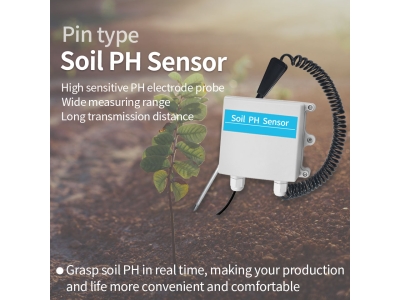The agriculture industry is experiencing a paradigm shift as data-driven technologies revolutionize farming practices. One such technology that is gaining traction in recent years is soil sensor technology. By providing real-time insights into soil conditions, these sensors allow farmers to optimize crop cultivation, improve resource management, and ultimately maximize yields. In this article, we will explore the benefits of data-driven cultivation using soil sensor insights and its potential to revolutionize modern agriculture.
Understanding Soil Health:
Soil health is a critical factor in determining crop productivity and sustainability. Traditional methods of assessing soil health, such as visual observation or manual testing, are time-consuming and can be subjective. Soil sensors, on the other hand, provide precise and objective measurements of key soil parameters such as moisture content, temperature, pH levels, and nutrient availability. This data offers farmers a comprehensive understanding of their soil health, enabling them to make informed decisions regarding irrigation, fertilization, and other agronomic practices.
Precision Irrigation:
Water scarcity is a growing concern in many agricultural regions, making efficient water management essential for sustainable farming. Soil sensors play a crucial role in precision irrigation by providing real-time information on soil moisture levels. Farmers can use this data to optimize irrigation schedules, ensuring that crops receive adequate moisture while minimizing water wastage. By avoiding over-irrigation, farmers can prevent waterlogging and nutrient leaching, resulting in healthier plants and improved water-use efficiency.
Nutrient Management:
Optimal nutrient management is vital for healthy plant growth and high yields. Soil sensors help farmers monitor nutrient levels in the soil, allowing them to adjust fertilizer applications accordingly. By accurately measuring nutrient concentrations, farmers can avoid under- or over-fertilization, reducing costs and minimizing environmental impacts. Data from soil sensors can also reveal nutrient imbalances or deficiencies, enabling farmers to address these issues promptly and prevent yield losses.
Crop-Specific Recommendations:
Different crops have varying nutrient requirements and growth conditions. Soil sensors provide crop-specific insights that allow farmers to tailor their cultivation practices accordingly. By analyzing soil data collected from sensor networks, farmers can identify areas within their fields that are better suited for specific crops. This precision targeting maximizes the efficiency of resource allocation, reduces input costs, and optimizes yields. Additionally, soil sensor data can be integrated with crop models and historical weather data to generate accurate predictions and recommend optimal planting dates and other agronomic practices.

Pest and Disease Management:
Early detection and timely intervention are crucial in managing pests and diseases effectively. Soil sensors can play a role in pest and disease management by providing early warning signs. Changes in soil moisture levels, temperature, and other parameters can indicate the presence of pests or diseases, allowing farmers to take preventive measures promptly. By integrating soil sensor data with other monitoring technologies, such as aerial imaging or satellite data, farmers can develop a comprehensive understanding of pest and disease dynamics, making informed decisions about pest control strategies.
Environmental Sustainability:
Data-driven cultivation using soil sensor insights promotes environmental sustainability in several ways. By optimizing irrigation and nutrient management, farmers reduce water usage, fertilizer runoff, and the release of greenhouse gases. Precision targeting and crop-specific recommendations also reduce the use of pesticides and other agrochemicals, minimizing their impact on ecosystems and human health. Furthermore, by promoting healthy soil conditions through data-driven cultivation, farmers enhance soil fertility, biodiversity, and carbon sequestration, contributing to long-term sustainability and resilience.
Scaling Up and Future Potential:
As soil sensor technology continues to advance, its potential impact on agriculture is vast. Emerging technologies, such as wireless sensor networks, Internet of Things (IoT) integration, and artificial intelligence (AI) algorithms, enable real-time data collection, analysis, and decision-making on a large scale. This scalability allows farmers to monitor larger areas with greater precision and make data-driven decisions across entire farms or even across regions. Additionally, the integration of soil sensor data with other agricultural data sources, such as weather forecasts or market demand, opens up new possibilities for optimizing resource allocation, supply chain management, and overall farm profitability.
Conclusion:
Data-driven cultivation using






